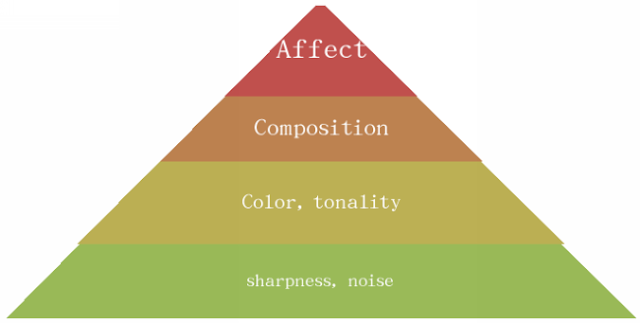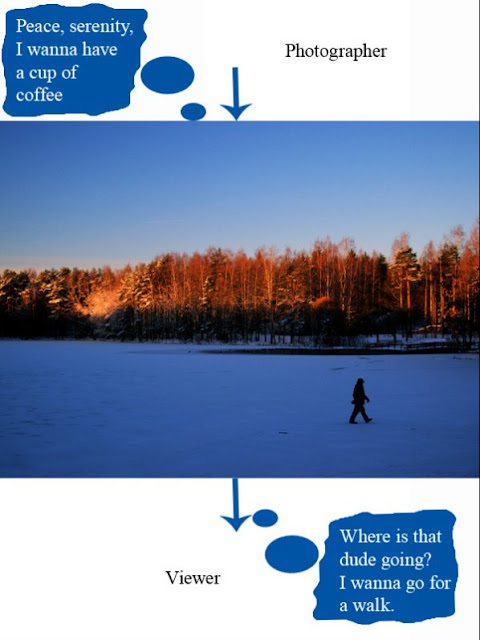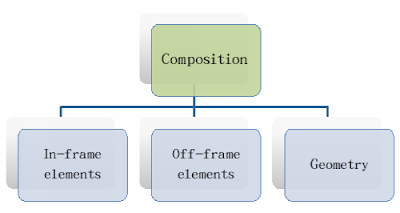Affect: an Introduction
I have often mentioned how affect (that is, feelings and thoughts) is an integral part of photography. Now, I will argue for an even more strict definition, one that you might resist:
Photography is all about affectWhat I mean by that is that photography as art is not preoccupied with colors, contrast, sharpness, tonality, or even composition. All of these are very important, needless to say. But they are mere components of something far larger: Affect. All of these must dance to the tune of affect, and the expressive power of a photo, the core of its artistic value, lies in affect and affect only.
 |
| The Pyramid of Meaning: things at the top are the most important |
But how do we translate affect into an image? The use of the word “translate” should give you a hint: It is a process of encoding and decoding. The feelings and thoughts of the photographer must be encoded as image, and in a way that, ideally, any viewer can then decode them more or less accurately. Of course, there will be variations. Some viewers might not be able to decode the message properly, or they might reverse it altogether. But you know what? It doesn't matter. The important thing is that there is a message to be decoded. Take a look at the photo/diagram below.
As you can see, in this example case the message did not transmit accurately from photographer/artist to viewer/audience. That does not mean this is a failed image. George Seferis, awarded the 1963 Nobel Prize for Literature, was once asked at a press conference about one of his texts, with the reporter offering an elaborate interpretation then asking Seferis how he had managed to conceive it. Seferis, calmly, told the man: “My dear fellow, that is the most amazing interpretation, not even I had thought of that”.
You see – and I am repeating myself, for a reason – it doesn't matter if a viewer sees something in your photo that you did not intend. You might disagree with their findings, perhaps you are even annoyed by them. An artistically failed image is only that which does not provoke any reaction in terms of feelings, thoughts, or states of mind.
Some Basic Signifiers
If, therefore, creating an image is a bit like encoding (and viewing it is like decoding), we should take a look at the ciphers; the signifiers, that we can use to translate affect into picture. We are looking for a way to examine the ontology of a photo. If this sounds excessively theoretical or philosophical, worry not. The figures below will be easy to understand!
As you can perhaps guess, there is a temporal element involved here. Composition is what you do well before you press the shutter button. Exposure is the decisions you need to make pressing the shutter button (well, just before!). Post-production is, obviously enough, something that happens later. Now, let us take a look at these aspects above in more detail.
By in-frame elements, I refer to what is in the frame, what is visible. By off-frame elements, I refer to what is outside the frame, and invisible. You might wonder in which way something that is not part of the picture can affect the composition, but remember that it is all about balance and expectations.
As for geometry, this includes all aspects related to position, orientation, and perspective that can alter the affective power of a photo: Is the photo taken in horizontal (landscape) or vertical (portrait) orientation (or something in between)? Is the photo taken so that the subject is photographed from a high or a low angle? And what about perspective, does it augment the sense of depth or minimize it? The choice of focal length is a critical aspect regarding perspective.
Keep reading. Thanks!




No comments:
Post a Comment